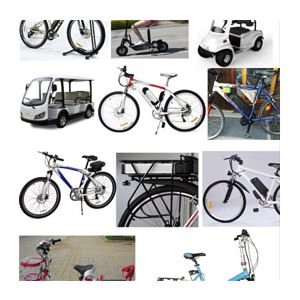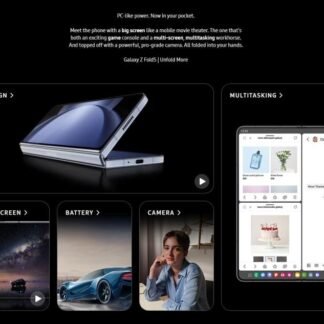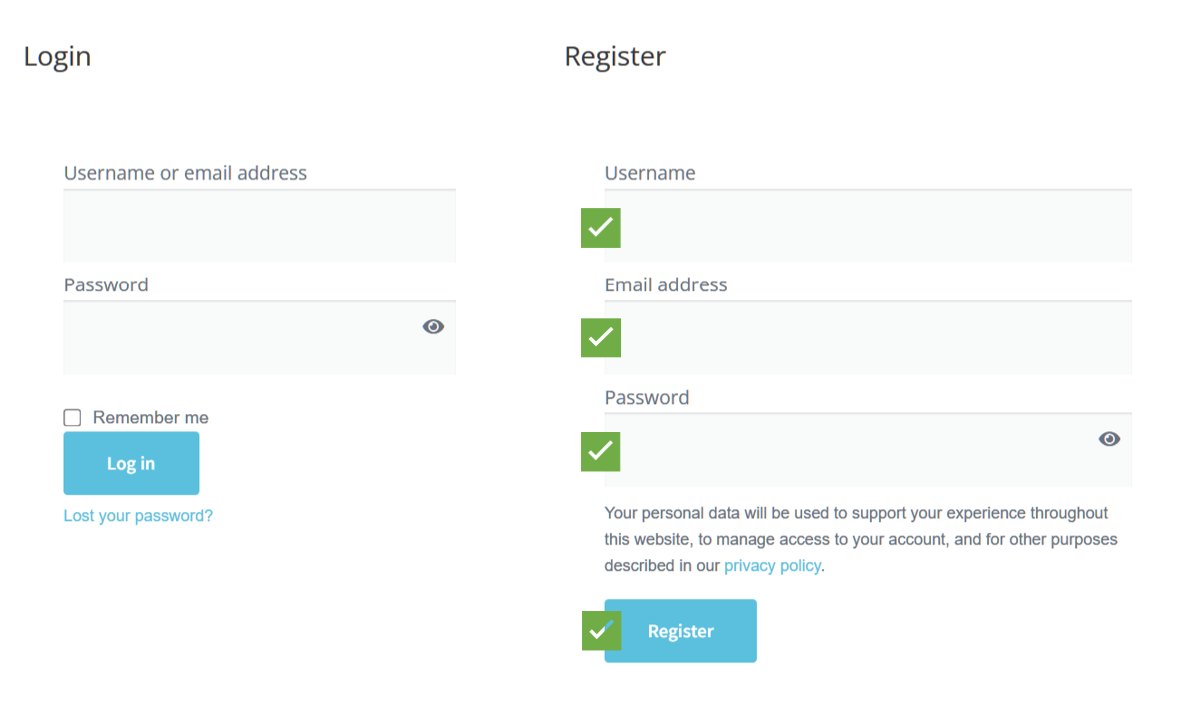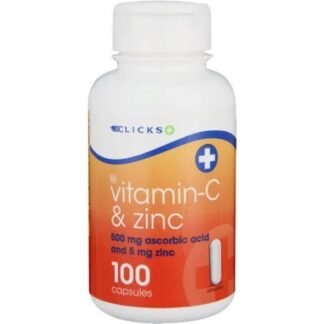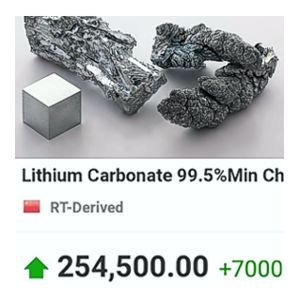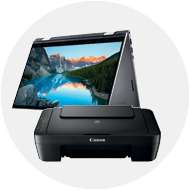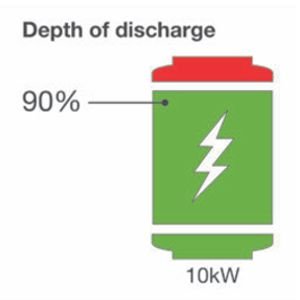E-Commerce SEO | Shopping Engine Optimization
WAKE UP THIS IS NOT THE ANSWER!
A lot of people forget that Amazon is a search engine, let alone the largest search engine for e-commerce. With 54 percent of product searches now taking place on Amazon, itÔÇÖs time to take it seriously as the worldÔÇÖs largest search engine for e-commerce. In fact, if we exclude YouTube as part of Google, Amazon is technically the second largest search engine in the world.
As real estate on Google becomes increasingly difficult to maintain, moving beyond a website-centric e-commerce strategy is a no brainer. With 54% of shoppers choosing to shop on e-commerce marketplaces, itÔÇÖs no surprise that online marketplaces are the number one most important digital marketing channel in the US, according to a 2018 study by the Digital Marketing Institute. While marketplaces like Etsy and Walmart are growing fast, Amazon maintains its dominance of e-commerce market share owning 47 percent of online sales, and 5 percent of all retail sales in the US.
Considering that there are currently over 500 million products listed on Amazon.com, and more than two-thirds of clicks happen on the first page of AmazonÔÇÖs search resultsÔÇöselling products on Amazon is no longer as easy as “set it and forget it.”
Enter the power of SEO.
When we think of SEO, many of us are aware of the basics of how GoogleÔÇÖs algorithm works, but not many of us are up to speed with SEO on Amazon. Before we delve into AmazonÔÇÖs algorithm, itÔÇÖs important to note how Google and AmazonÔÇÖs starkly different business models are key to what drives their algorithms and ultimately how we approach SEO on the two platforms.
The academic vs. The stockbroker
Google was born in 1998 through a Ph.D. project by Lawrence Page and Sergey Brin. It was the first search engine of its kind designed to crawl and index the web more efficiently than any existing systems at the time.
Google was built on a foundation of scientific research and academia, with a mission to;
ÔÇ£Organize the worldÔÇÖs information and make it universally accessible and usefulÔÇØ ÔÇö Google.
Now, answering 5.6 billion queries every day, GoogleÔÇÖs mission is becoming increasingly difficult ÔÇö which is why their algorithm is designed as the most complex search engine in the world, continuously refined through hundreds of updates every year.
In contrast to Brin and Page, Jeff Bezos began his career on Wall Street in a series of jobs before starting Amazon in 1994 after reading that the web was growing at 2,300 percent. Determined to take advantage of this, he made a list of the top products most likely to sell online and settled with books because of their low cost and high demand.
Amazon was built on a revenue model, with a mission to:
ÔÇ£Be the EarthÔÇÖs most customer-centric company, where customers can find and discover anything they might want to buy online, and endeavors to offer its customers the lowest possible prices.ÔÇØ – Amazon
Amazon doesnÔÇÖt have searcher intent issues.
When it comes to SEO, the contrasting business models of these two companies lead the search engines to ask very different questions to deliver the right results to the user.
On one hand, we have Google who asks the question:
ÔÇ£What results most accurately answer the searcherÔÇÖs query?ÔÇØ
Amazon, on the other hand, wants to know:
ÔÇ£What product is the searcher most likely to buy?ÔÇØ
On Amazon, people arenÔÇÖt asking questions, theyÔÇÖre searching for productsÔÇöand whatÔÇÖs more, theyÔÇÖre ready to buy. So, while Google is busy honing an algorithm that aims to understand the nuances of human language, AmazonÔÇÖs search engine serves one purposeÔÇöto understand searches just enough to rank products based on their propensity to sell.
Working to increase organic rankings on Amazon becomes a lot less daunting.
AmazonÔÇÖs A9 algorithm: The secret ingredient
Amazon may dominate e-commerce search, but many people havenÔÇÖt heard of the A9 algorithm. Which might seem unusual, but the reason Amazon isnÔÇÖt keen on pushing their algorithm through the lens of a large-scale search engine is simply that Amazon isnÔÇÖt in the business of search.
AmazonÔÇÖs business model is a well-oiled revenue-driving machine ÔÇö designed first and foremost to sell as many products as possible through its online platform. While AmazonÔÇÖs advertising platform is growing rapidly, and AWS continues as their fastest-growing revenue source ÔÇö Amazon still makes a large portion of revenue through goods sold through the marketplace.
With this in mind, the secret ingredient behind AmazonÔÇÖs A9 algorithm is, in fact: Sales Velocity
What is sales velocity, you ask? ItÔÇÖs essentially the speed and volume at which your products sell on AmazonÔÇÖs marketplace.
There are lots of factors which Amazon SEOÔÇÖs refer to as “direct” and “indirect” ranking factors, but ultimately every single one of them ties back to sales velocity in some way.
At Wolfgang Digital, we approach SEO on Google based on three core pillars ÔÇö Technology, Relevance, and Authority.
Evidently, GoogleÔÇÖs ranking pillars are all based on optimizing a website in order to drive click through on the SERP.
On the other hand, AmazonÔÇÖs core ranking pillars are tied back to driving revenue through sales velocity ÔÇö Conversion Rate, Keyword Relevance and of course, Customer Satisfaction.
Without further ado, letÔÇÖs take a look at the key factors behind each of these pillars, and what you can optimize to increase your chances of ranking on AmazonÔÇÖs coveted first page.
Conversion rate
Conversion rates on Amazon have a direct impact on where your product will rank because this tells AmazonÔÇÖs algorithm which products are most likely to sell like hotcakes once they hit the first page.
Of all variables to monitor as an Amazon marketer, working to increase conversion rates is your golden ticket to higher organic rankings.
Optimize pricing
AmazonÔÇÖs algorithm is designed to predict which products are most likely to convert. This is why the price has such a huge impact on where your products rank in search results. If you add a new product to Amazon at a cheaper price than the average competitor, your product is inclined to soar to the top-ranking results, at least until it gathers enough sales history to determine the actual sales performance.
Even if youÔÇÖre confident that you have a supplier advantage, itÔÇÖs worth checking your top-selling products and optimizing pricing where possible. If you have a lot of products, repricing software is a great way to automate pricing adjustments based on the competition while still maintaining your margins.
However, Amazon knows that price isnÔÇÖt the only factor that drives sales, which is why AmazonÔÇÖs first page isnÔÇÖt simply an ordered list of items priced low to high. See the below Amazon UK search results for ÔÇ£lavender essential oil:ÔÇØ
Excluding the sponsored ads, we can still see that not all of the cheap products are ranked high and the more expensive ones lower down the page. So, if youÔÇÖve always maintained the idea that selling on Amazon is a race to the bottom on price, read on my friends.
Create listings that sell
As we discussed earlier, Amazon is no longer a ÔÇ£set it and forgetÔÇØ platform, which is why you should treat each of your product listings as you would a product page on your website. Creating listings that convert takes time, which is why not many sellers do it well, so itÔÇÖs an essential tactic to steal conversions from the competition.
Title
Make your titles user-friendly, include the most important keywords at the front, and provide just enough information to entice clicks. Gone are the days of keyword stuffing titles on Amazon, in fact, it may even hinder your rankings by reducing clicks and therefore conversions.
Bullet points
These are the first thing your customer sees, so make sure to highlight the best features of your product using a succinct sentence in language designed to convert.
Improve the power of your bullet points by including information that your top competitors donÔÇÖt provide. A great way to do this is to analyze the ÔÇ£answered questionsÔÇØ for some of your top competitors.
Do you see any trending questions that you could answer in your bullet points to help shorten the buyer journey and drive conversions to your product?
Product descriptions
Given that over 50 percent of Amazon shoppers said they always read the full description when they are considering purchasing a product, a well-written product description can have a huge impact on conversions.
Your description is likely to be the last thing a customer will read before they choose to buy your product over a competitor, so give these your time and care, reiterating points made in your bullet points and highlighting any other key features or benefits likely to push conversions over the line.
Taking advantage of A+ content for some of your best selling products is a great way to craft a visually engaging description, like this example from Safavieh.
Of course, A+ content requires additional design costs which may not be feasible for everyone. If you opt for text-only descriptions, make sure your content is easy to read while still highlighting the best features of your product.
For an in-depth breakdown on creating a beautifully crafted Amazon listing, I highly recommend this post from Startup Bros.
AB test images
Images are incredibly powerful when it comes to increasing conversions, so if you havenÔÇÖt tried split testing different image versions on Amazon, you could be pleasantly surprised. One of the most popular tools for Amazon AB testing is Splitly ÔÇö itÔÇÖs really simple to use, and affordable with plans starting at $47 per month.
Depending on your product type, it may be worth investing the time into taking your own pictures rather than using the generic supplier provided images. Images that tend to have the biggest impact on conversions are the feature images (the one you see in search results) and close up images, so try testing a few different versions to see which has the biggest impact.
Amazon sponsored ads
The best thing about Amazon SEO is that your performance on other marketing channels can help support your organic performance.
Unlike on Google, where advertising has no impact on organic rankings, if your product performs well on Amazon ads, it may help boost organic rankings. This is because if a product is selling through ads, AmazonÔÇÖs algorithm may see this as a product that users should also see organically.
A well-executed ad campaign is particularly important for new products, in order to boost their sales velocity in the beginning and build up the sales history needed to rank better organically.
External traffic
External traffic involves driving traffic from social media, email, or other sources to your Amazon products.
While external sources of traffic are a great way to gain more brand exposure and increase customer reach, a well-executed external traffic strategy also impacts your organic rankings because of its role in increasing sales and driving up conversion rates.
Before you start driving traffic straight to your Amazon listing, you may want to consider using a landing page tool like Landing Cube in order to protect your conversion rate as much as possible.
With a landing page tool, you drive traffic to a landing page where customers get a special offer code to use on your product listing pageÔÇöthis way, you only drive traffic which is guaranteed to convert.
Keyword relevance
A9 still relies heavily on keyword matching to determine the relevance of a product to searcherÔÇÖs query, which is why this is a core pillar of Amazon SEO.
While your title, bullet points, and descriptions are essential for converting customers, if you donÔÇÖt include the relevant keywords, your chances of driving traffic to convert are slim to none.
Every single keyword incorporated in your Amazon listing will impact your rankings, so itÔÇÖs important to deploy a strategic approach.
Steps for targeting the right keywords on Amazon:
- Brainstorm as many search terms you think someone would use to find your product.
- Analyze 3ÔÇô5 competitors with the most reviews to identify their target keywords.
- Validate the top keywords for your product using an Amazon keyword tool such as Magnet, Ahrefs, or Keywordtool.io.
- Download the keyword lists into Excel, and filter out any duplicate or irrelevant keywords.
- Prioritize search terms with the highest search volume, bearing in mind that broad terms will be harder to rank for. Depending on the competition, it may make more sense to focus on lower volume terms with lower competitionÔÇöbut this can always be tested later on.
Once you have refined the keywords you want to rank for, here are some things to remember:
- Include your most important keywords at the start of the title, after your brand name.
- Use long-tail terms and synonyms throughout your bullets points and descriptions.
- Use your backend search terms wisely ÔÇö these are a great place for including some common misspellings, different measurement versions e.g. metric or imperial, color shades and descriptive terms.
- Most importantly ÔÇö donÔÇÖt repeat keywords. If youÔÇÖve included a search term once in your listing i.e. the title, you donÔÇÖt need to include it in your backend search terms. Repeating a keyword, or keyword stuffing will not improve your rankings.
Customer satisfaction
Account health
Part of AmazonÔÇÖs mission statement is ÔÇ£to be the EarthÔÇÖs most customer-centric company.ÔÇØ This relentless focus on the customer is what drives AmazonÔÇÖs astounding customer retention, with 85 percent of Prime shoppers visiting the marketplace at least once a week and 56% of non-Prime members reporting the same. A focus on the customer is at the core of AmazonÔÇÖs success, which is why stringent customer satisfaction metrics are a key component to selling on Amazon.
Your account health metrics are the bread and butter of your success as an Amazon seller, which is why theyÔÇÖre part of AmazonÔÇÖs core ranking algorithm. Customer experience is so important to Amazon that, if you fail to meet the minimum performance requirements, you risk getting suspended as a sellerÔÇöand they take no prisoners.
On the other hand, if you are meeting your minimum requirements but other sellers are performing better than you by exceeding theirs, they could be at a ranking advantage.
Customer reviews
Customer reviews are one of the most important Amazon ranking factors ÔÇö not only do they tell Amazon how customers feel about your product, but they are one of the most impactful conversion factors in e-commerce. Almost 95 percent of online shoppers read reviews before buying a product, and over 60 percent of Amazon customers say they wouldnÔÇÖt purchase a product with less than 4.5 stars.
On Amazon, reviews help to drive both conversion rate and keyword relevance, particularly for long-tail terms. In short, theyÔÇÖre very important.
Increasing reviews for your key products on Amazon was historically a lot easier, through acquiring incentivized reviews. However, in 2018, Amazon banned sellers from incentivizing reviews which makes it even more difficult to actively build reviews, especially for new products.
Tips for building positive reviews on Amazon:
- Maintain consistent communication throughout the purchase process using Amazon email marketing software. Following up to thank someone for their order and notify when the order if fulfilled, creates a seamless buying experience which leaves customers more likely to give a positive review.
- Adding branded package inserts to thank customers for their purchase makes the buying experience personal, differentiating you as a brand rather than a nameless Amazon seller. Including a friendly reminder to leave a review in a nice delivery note will have better response rates than the generic email they receive from Amazon.
- Providing upfront returns information without a customer having to ask for it shows customers you are confident in the quality of your product. If a customer isnÔÇÖt happy with your product, adding fuel to the fire with a clunky or difficult returns process is more likely to result in negative reviews through sheer frustration.
- Follow up with helpful content related to your products such as instructions, decor inspiration, or recipe ideas, including a polite reminder to provide a review in exchange.
- And of course, deliver an amazing customer experience from start to finish.
Key takeaways for improving Amazon SEO
As a marketer well versed in the world of Google, venturing onto Amazon can seem like a culture shock ÔÇö but mastering the basic principles of Amazon SEO could be the difference between getting lost in a sea of competitors and driving a successful Amazon business.
- Focus on driving sales velocity through increasing conversion rate, improving keyword relevance, nailing customer satisfaction, and actively building reviews.
- Craft product listings for customers first, search engines second.
- DonÔÇÖt neglect product descriptions in the belief that no one reads themÔÇöover 50% of Amazon shoppers report reading the full description before buying a product.
- Keywords carry a lot of weight. If you donÔÇÖt include a keyword in your listing, your chances of ranking for it are slim.
- Images are powerful. Take your own photos instead of using generic supplier images and be sure to test, test, and test.
- Actively build positive reviews by delivering an amazing customer experience.
- Invest in PPC and driving external traffic to support organic performance, especially for new products.
What other SEO tips or tactics do you apply on Amazon?
Let me tell you the truth. DonÔÇÖt expect miracles. Even if all of this was new and this was the first time it was published, or you hired the best SEO people in the business and the best advertising agency who understood how all the different algorithms worked. There is still a fundamental issue that is hiding in plain sight.
Note: This is not an error (Below)
Google was built on a foundation of scientific research and academia, with a mission to;
ÔÇ£Organize the worldÔÇÖs information and make it universally accessible and usefulÔÇØ ÔÇö Google.
Now, answering 5.6 billion queries every day, GoogleÔÇÖs mission is becoming increasingly difficult ÔÇö which is why their algorithm is designed as the most complex search engine in the world, continuously refined through hundreds of updates every year.
Amazon was built on a revenue model, with a mission to:
Amazon doesnÔÇÖt have searcher intent issues.
When it comes to SEO, the contrasting business models of these two companies lead the search engines to ask very different questions to deliver the right results to the user.
On one hand, we have Google who asks the question: ÔÇ£What results most accurately answer the searcherÔÇÖs query?ÔÇØ
Amazon, on the other hand, wants to know: ÔÇ£What product is the searcher most likely to buy?ÔÇØ
On Amazon, people arenÔÇÖt asking questions, theyÔÇÖre searching for productsÔÇöand whatÔÇÖs more, theyÔÇÖre ready to buy. So, while Google is busy honing an algorithm that aims to understand the nuances of human language, AmazonÔÇÖs search engine serves one purposeÔÇöto understand searches just enough to rank products based on their propensity to sell.
IF ALL ADVERTISING COULD BE UNPLUGGED.
I donÔÇÖt mean just the ads that introduce themselves as those are only there as red herrings. Sure, if you place an advertisement, and go and seek it out, it will be there looking back at you. I mean all advertising. Then the Shopping Engine or ÔÇÿproduct search engineÔÇÖ is obviously much better for the consumer.
You can elaborate when it comes to the search engine, but the Shopping Engine or the product search engine I struggle to get my head around the ÔÇ£Be the EarthÔÇÖs most customer-centric company, where customers can find and discover anything they might want to buy online, and endeavors to offer its customers the lowest possible prices.ÔÇØ ÔÇô Amazon. ÔÇ£Be the EarthÔÇÖs most customer-centric company.
- The merchants that sell on Amazon are also customers. No one is forcing anyone to be sellers on Amazon and it does not seem like Amazon struggles to find sellers.
- Maybe I misunderstood ÔÇ£Be the EarthÔÇÖs most customer-centric company, where customers can find and discover anything they might want to buy online, and endeavors to offer its customers the lowest possible prices.ÔÇØ ÔÇô maybe they are only referring to retail or (B2C) customers and not (B2B). Please someone help me understand this.
- I assume most people need to earn a salary to survive so I can understand covering expenses and paying salaries etc. But if a company makes a net profit of over $1million (USD) does that mean after paying all their employees including middle and top management, if that is correct it is impressive. But I would think ÔÇÿthe most consumer centric company on the planetÔÇÖ would reduce product prices by $1 million (USD). Would that not be more in line with the most consumer centric company on Earth.




